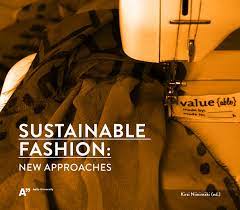Sustainable fashion has come a long way in recent years. What was once seen as a niche market has now become a mainstream trend, with many brands and consumers prioritizing sustainability in their clothing choices. In this article, we will explore the evolution of sustainable fashion and its impact on the industry as a whole.
In the early days, sustainable fashion was primarily associated with eco-friendly materials and ethical production practices. This meant using materials like organic cotton, recycled polyester, and bamboo, and ensuring that workers in the supply chain were paid a fair wage and provided with safe working conditions. While these practices were admirable, sustainable fashion was still seen as a niche market that catered to a small subset of consumers.
However, in recent years, sustainable fashion has gained significant momentum and has become a mainstream trend. There are several reasons for this shift. First, there is a growing awareness of the environmental impact of the fashion industry. Consumers are becoming more conscious of the waste and pollution created by fast fashion and are seeking out more sustainable alternatives.
Second, there is a shift in consumer values. Many people are now prioritizing ethical and sustainable practices in all areas of their lives, including their clothing choices. This has created a demand for sustainable fashion that didn’t exist before.
Third, there is a growing number of sustainable fashion brands that are making it easier for consumers to make more eco-friendly choices. These brands are not only creating stylish and sustainable clothing, but they are also using innovative technologies to reduce waste and minimize their environmental impact.
One of the biggest drivers of the sustainable fashion movement has been the adoption of circular business models. In the past, the fashion industry operated on a linear model, where clothing was produced, sold, and eventually discarded. This model contributed to the growing problem of textile waste and pollution.
However, in recent years, many brands have adopted circular business models that prioritize the recycling and reuse of clothing. This means designing clothing that is made to be recycled or repurposed, as well as implementing take-back programs that allow customers to return their used clothing to the brand for recycling.
Another way that sustainable fashion has evolved is through the use of technology. From 3D printing to blockchain, technology is being used to create more sustainable and ethical fashion. For example, 3D printing allows for on-demand production, reducing waste and minimizing the need for large-scale manufacturing facilities. Blockchain is being used to create more transparent supply chains, allowing consumers to track the journey of their clothing from production to purchase.
In conclusion, sustainable fashion has come a long way in recent years. What was once a niche market has now become a mainstream trend, with many brands and consumers prioritizing sustainability in their clothing choices. This shift has been driven by a growing awareness of the environmental impact of the fashion industry, a shift in consumer values, and the adoption of circular business models and innovative technologies. As the sustainable fashion movement continues to grow, we can expect to see more innovative solutions that prioritize both style and sustainability.

